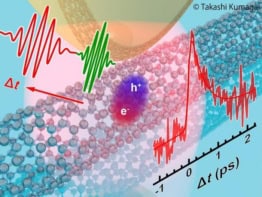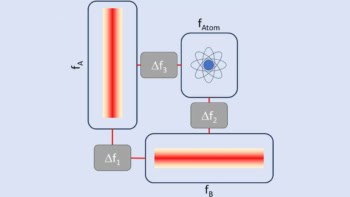Brahim Lounis and colleagues at the University of Bordeaux in France have developed a new way of visualizing proteins in cells by labelling them with gold nanoparticles. The all-optical method is highly sensitive and allows 3-D imaging of molecules while overcoming many of the disadvantages of traditional techniques. It could help researchers image proteins efficiently and non-destructively, and might also be extended to other biological systems such as DNA (Proc. Nat. Acad. Sci. 100 11350).
It is difficult to detect individual molecules in biological tissue samples, especially using optical methods, because the signal from the molecule of interest must be extracted from that of all the other billions of molecules in the sample. Researchers have got round this problem by attaching a label to the relevant molecule and measuring the intense signal produced by it. But the traditional type of label – fluorescing particles known as fluorophores – can transform into non-fluorescing compounds over time and therefore become useless.
To overcome this, researchers use metallic particles instead of fluorophores. These particles are able to deflect laser light in a process known as Rayleigh scattering. However, because the scattering decreases as the diameter of the particle becomes smaller, methods based on measuring this effect only work with particles that have diameters of at least 40-nm.
To image on smaller scales, Lounis and co-workers stained membrane proteins of COS7 cells with 10-nm gold particles, and then illuminated the sample with light from a 514-nm wavelength argon laser. The laser light was strongly absorbed by the gold nanoparticles, causing the area around them to heat up and the local value of the refractive index to decrease. The researchers then used a second laser beam to detect this change in refractive index.
The Bordeaux team found that the strength of the signal from the individual nanoparticles depends linearly on the intensity of the laser beam used to heat the sample. A 150 nanowatt beam resulted in a signal-to-noise ratio of more than 20, twice as high as the ratio obtained using previous methods. However, Lounis and co-workers admit that the heating effect of their technique may make it unsuitable for imaging living cells – a signal-to-noise ratio of 10 means a temperature rise of about 15 K. They now hope to reduce the heating power in future experiments.



